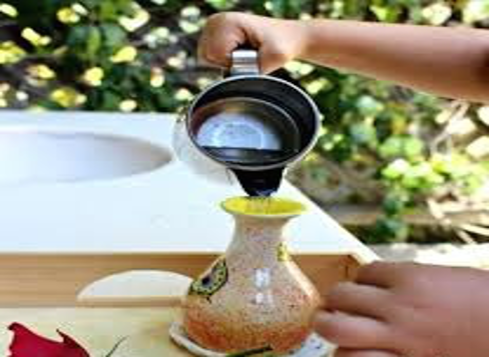- (08) 9250 4153
- taramontessori1@gmail.com
- Mon - Fri: 7:30am - 5:30pm
- taramontessori1@gmail.com
Our Curriculum aims to provide a collection of experiences and documentation of your child’s time with us at Tara Montessori. Education at Tara Montessori Early Learning Centre is based on the principles developed by Maria Montessori and the Early Years Learning Framework.
We offer a preschool program for children aged 18 months-6 years exposing them to sequential learning in all the core curriculum areas of Practical life skills, Sensorial, literacy, Numeracy, Science and Cultural studies. We educate children through their senses and offer hands on experience and a varied curriculum, which incorporates sustainability and care for their environment.

We recognize every window of opportunity as a special time to offer children a specific lesson and provide unhurried and uninterrupted time wherever possible for them to practice, repeat and complete their tasks. We offer children a wide range of experiences in music & movement, art and craft, cooking lessons, technology and community involvement, so they may become aware that the world is diverse and much larger than they first imagined.
The five key areas of learning in the Montessori environment include; Practical Life, Sensorial, Language, Mathematics, and Culture.
The Practical Life area of the classroom is an extension of the child’s own home environment. The exercise in place of they exercises encourage independence and promote the development of a sense of order. A child’s ability to concentrate develops with repetition of exercises, which is essential for future learning.
Practical life encompasses four main areas: Control of Movement, Care of Person, Care of Environment, and Grace and Courtesy. Skills, such as fine and gross motor, learned in this area of the classroom lay an important foundation to the whole Montessori method of education.


Children learn through their senses and the Montessori Sensorial curriculum promotes the development and refinement of the five senses. All materials in a Montessori environment provide learning through touch, taste, smell, sight, hearing or hands-on manipulation.
The sensorial materials enable a child to learn how to discriminate, contrast and grade within each sense, developing a greater awareness, knowledge and understanding of the environment. Together, these activities form the foundation for language, mathematical, musical, scientific and cultural studies.
The Montessori insets for design material prepare the hand for writing by developing and refining hand and eye co-ordination and pencil control. Pre reading materials such as matching objects to pictures or pictures to pictures help a child to define and organise impressions. As a child works with the sandpaper letters, they are gaining a muscular and visual impression of a letter as well as learning the sound, which also prepares them for forming letters correctly when writing.
Additional materials such as I Spy with objects or pictures, matching letters to an alphabet board or verbal games identifying initial or end sounds of words they are reinforcing the child’s knowledge of letters and sounds in preparation for reading and writing. A child gains word-building skills by working with the large moveable alphabet and begins to analyse words in preparation for reading, writing and spelling. A child becomes aware that there is a sequence to sounds in word.


Children in a Montessori classroom learn the basic concepts of mathematics with concrete materials initially which leads to a better understanding of abstract concepts. Children like to touch and move objects as they count and the Montessori materials allow a child to do exactly that.
Montessori mathematical materials allow the child as a sensorial explorer, to begin their mathematical journey from the concrete to the abstract through manipulation, repetition and exploration. Through concrete material the child learns to add, subtract, multiply and divide and gradually comes to understand many abstract mathematical concepts.
Incorporated into the culture areas of the curriculum are materials, activities and exercises that introduce children and science, geography, botany, zoology, music, physical education cooking, art and craft and history. The children work with globes, maps, land and water forms, and collections of pictures of life in different cultures and countries of the world gaining a knowledge and understanding of the world around them.
Dr. Maria Montessori believed that everything was connected, and that all things should work together in harmony and we can see evidence of this in the typical Montessori classroom. The environment, which is crucial to the child’s overall development, is also dependent on the materials and on the Directress to form it and maintain it. The environment, the directress, the materials and the children all receive help from and give support to one another.
The Montessori classroom is like a mini-version of how Montessori saw the universe. She believed that in the universe, all things are connected and that all things have a cosmic role to play.
Montessori is both philosophy of child growth and a rationale for guiding such growth. It is based on the child’s innate need to develop intellectual and physical abilities and provides a carefully prepared environment designed to meet and direct this need.

“I have studied the child. I have taken what the child has given me and expressed it and that is what is called the Montessori method”.
Maria Montessori